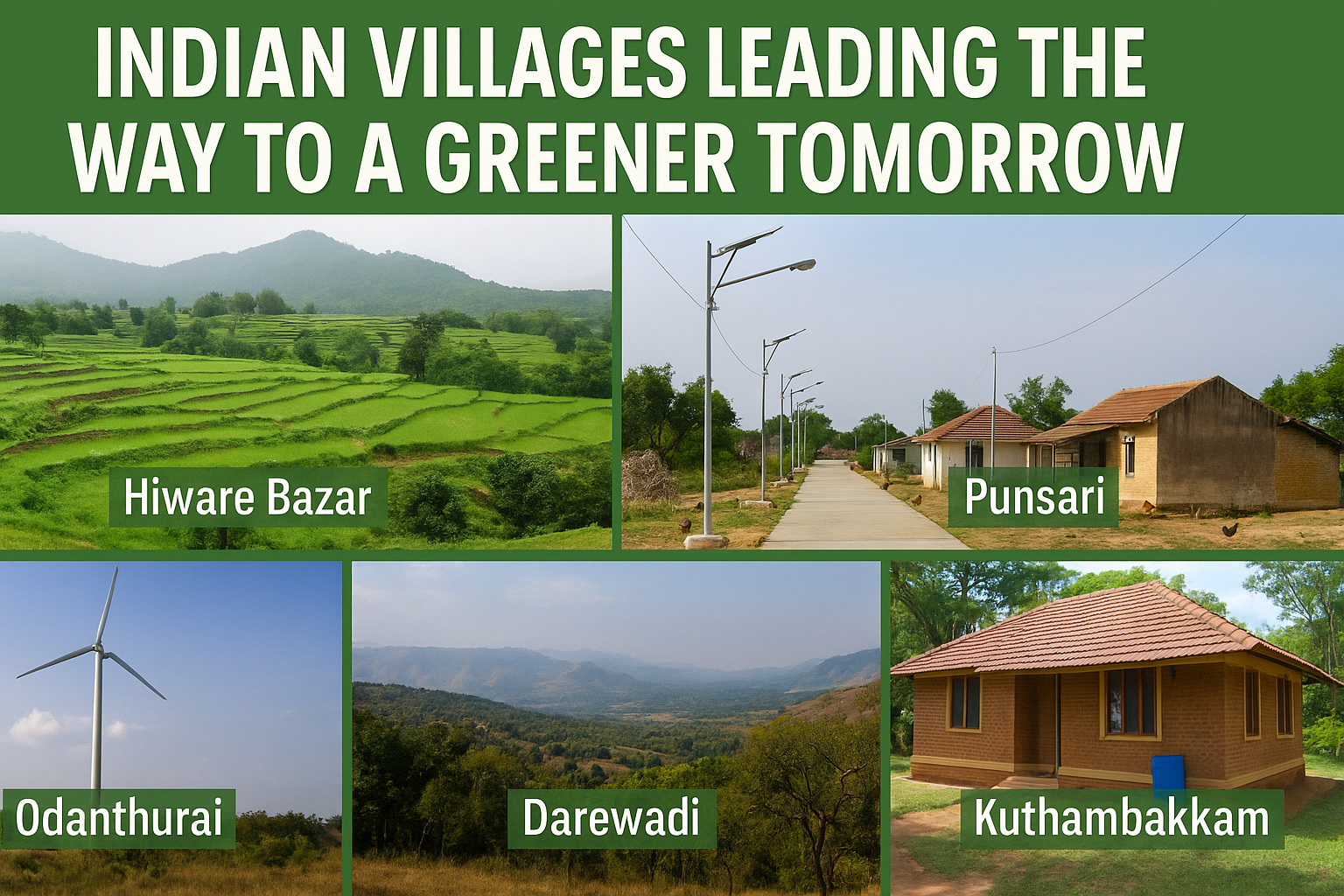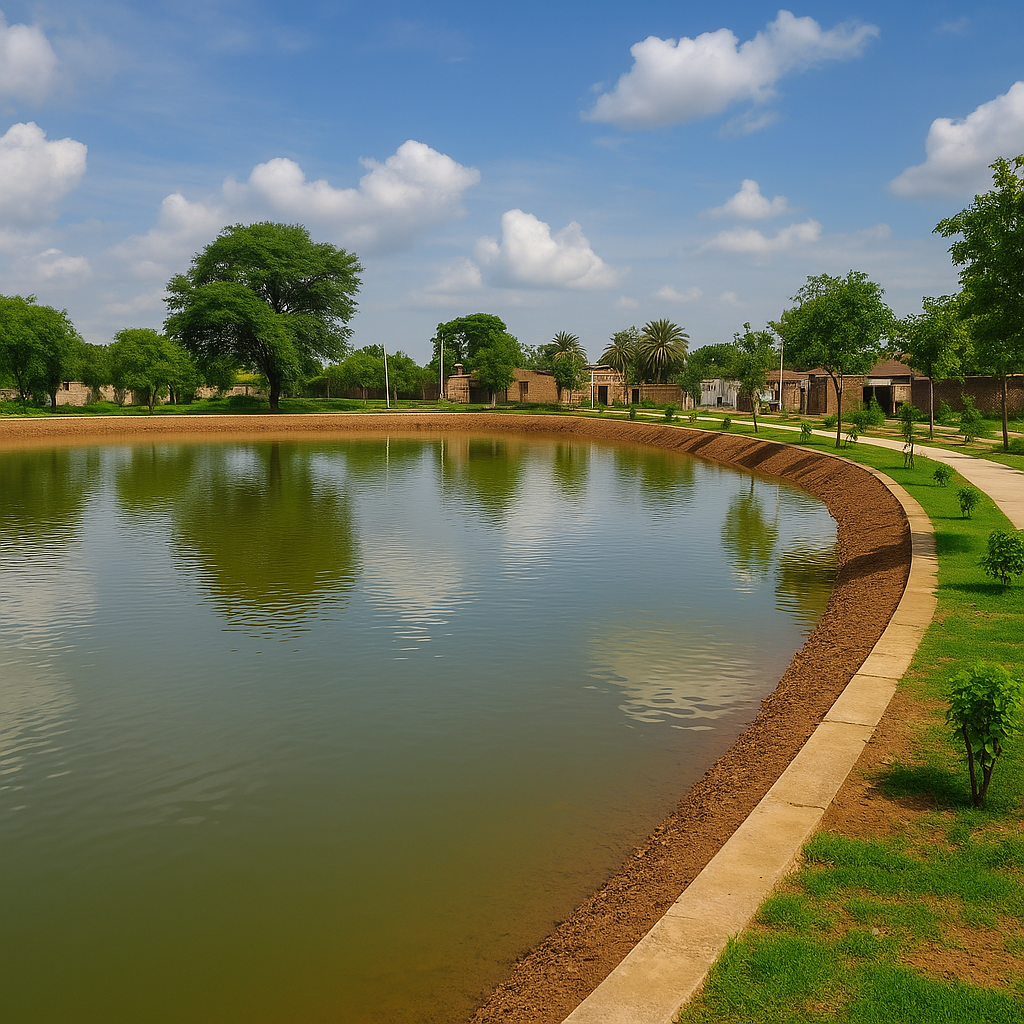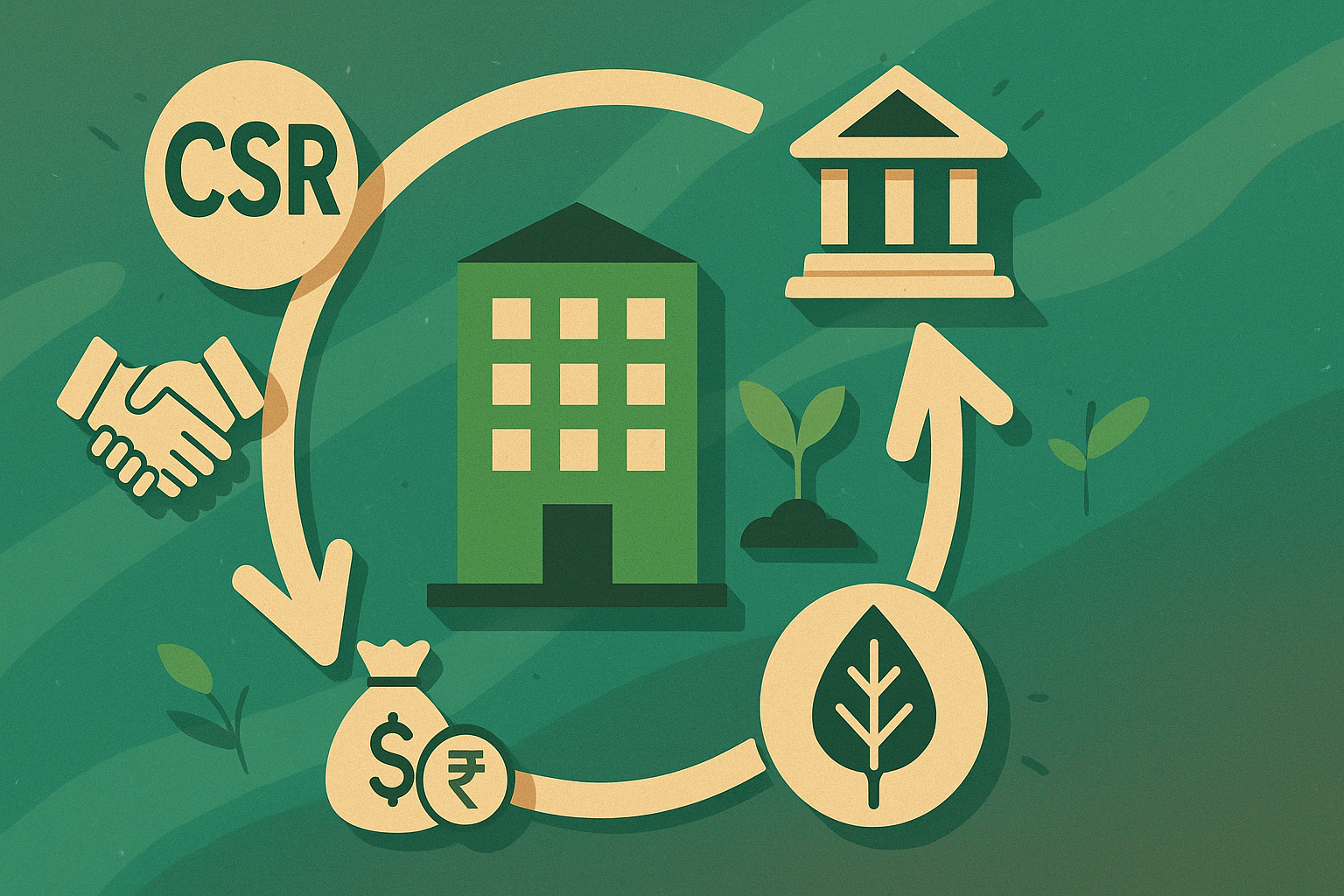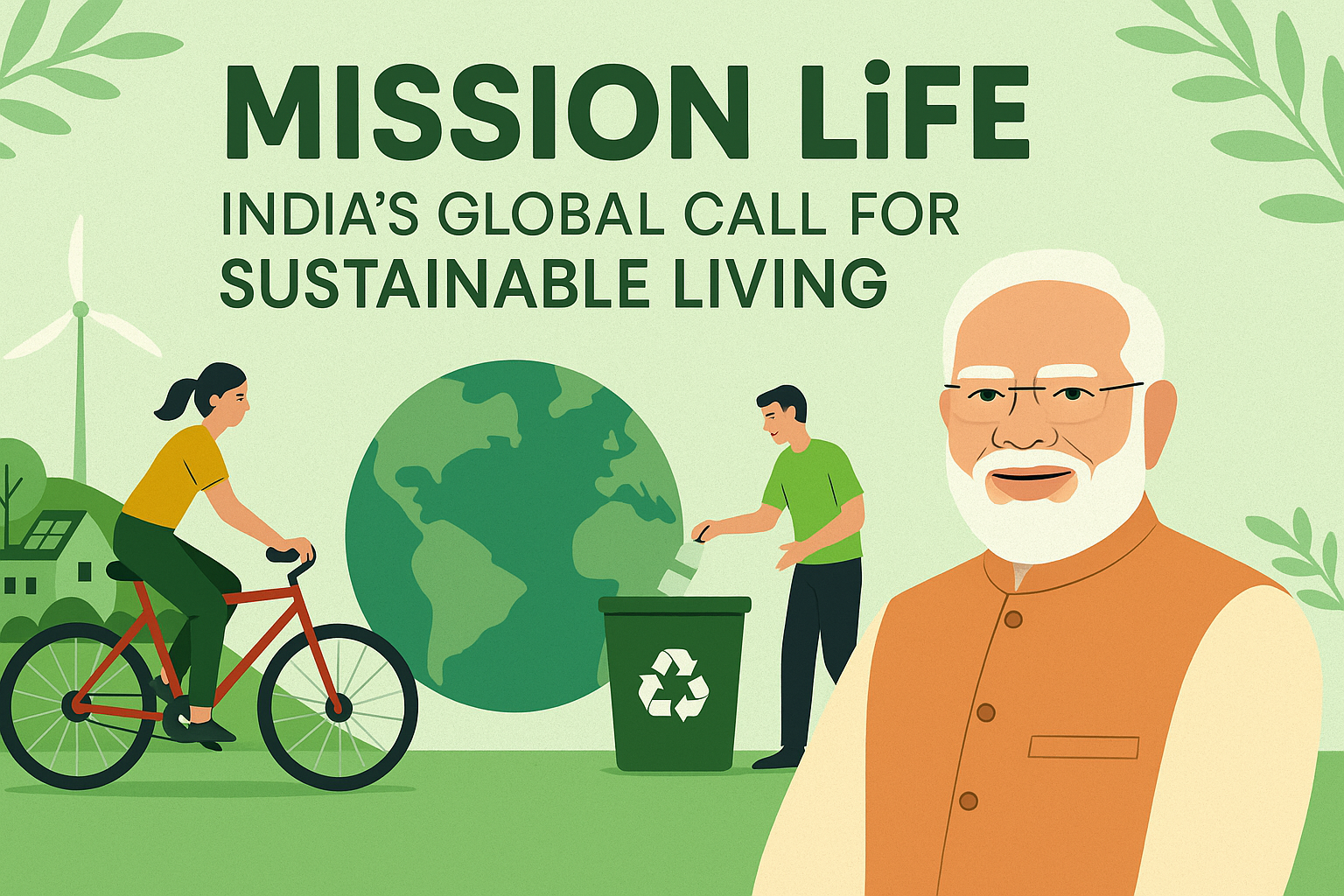When we hear the phrase "sustainable living" or "eco-innovation," our mind immediately jumps to large cities, technology centers, or global summits. But in truth, India's smallest villages are making some of the greatest contributions towards combatting climate change and building a greener tomorrow.
From renewable energy to zero waste, water management to organic cultivation - these villages are showing us how actual change begins at the grassroots level.
Let's take a look at five inspirational Indian villages at the forefront of making India a more sustainable and eco-friendly nation.
1. Hiware Bazar, Maharashtra – The Village Rises from Drought
Location: Ahmednagar District, Maharashtra
What was once a drought-stricken village plagued by high poverty rates and migration is now an exemplary model of water conservation and village autonomy.
What Makes It Green:
· Rainwater harvesting and check dams reactivated groundwater levels
· Applied soil and water conservation measures
· Moved to sustainable agriculture and eschewed water-guzzling crops
· Prohibited liquor and encouraged education and health
Impact:
· Groundwater increased appreciably; no water tankers required even during dry years
· Over 50 families who had migrated back
· Per capita income increased from ₹830 to over ₹30,000
Hiware Bazar demonstrates how a group mentality, with leadership and people's action, can totally reverse things.
2. Punsari, Gujarat – India's Smart Village
Location: Sabarkantha District, Gujarat
Punsari is also referred to as India's "smartest village" - and for good reason. With basic infrastructure covered, they've concentrated on technology, environment, and quality of life.
What Makes It Green:
· 100undefined access to solar-powered street lights
· CCTV cameras for village security
· Waste is segregated and dealt with scientifically
· Wi-Fi zones, public address systems, and RO drinking water plants
Impact:
· Estimated by national and international agencies as a model smart village
· All green initiatives are affordable and community-driven
Punsari shows that rural intelligence and new technology can live together for a cleaner, greener, and more networked village life.
3. Odanthurai, Tamil Nadu – Empowering the Future
Location: Coimbatore District, Tamil Nadu
Odanthurai is a tiny village, but it is big on renewable energy. It was the first Indian village to generate its own electricity from wind power.
What Makes It Green:
· Installed a 350-kW wind turbine with community and government financial assistance
· Sells excess power to the grid, generating electricity not only for the village but also for others
· Touts biogas, solar lights, and streetlights that are energy-efficient
Impact:
· Is self-sufficient in electricity, utilizing less fossil fuel
· Income from electricity sales annually helps pay for local schools and projects
Odanthurai gives an example of how renewable energy can empower rural communities; economically and ecologically.
4. Darewadi, Maharashtra – A Lesson in Reforestation
Location: Ahmednagar District, Maharashtra
In an area formerly affected by deforestation and drought, Darewadi revolutionized itself by reforestation and community-organized watershed development.
What Makes It Green:
· Villagers surrendered grazing livestock and tree cutting within the area
· Implemented check dams, contour trenches, and bunding to retain water
· Planted thousands of indigenous trees and restored local flora
Impact:
· Forest cover dramatically rose
· Dried-up streams and wells started flowing again
· Better livelihoods due to agriculture and water supply
Darewadi is a testament to how patience and community enthusiasm can revive an arid land.
5. Kuthambakkam, Tamil Nadu – Village of Self-Reliance
Location: Thiruvallur District, Tamil Nadu
Kuthambakkam, led by the visionary leadership of Elango Ranganathan, a past Panchayat president, became a beacon of sustainable village development.
What Makes It Green:
· Constructed environmentally friendly homes from locally sourced materials
· Established a bio-gas system and solar power initiatives
· Promoted self-help groups (SHGs) and community-owned enterprises
· Urged local production and consumption
Impact:
· Decreased poverty, housing improved, and local jobs created
· Created a "network economy" that prompted other villages to follow the model
Kuthambakkam demonstrates how social inclusion + sustainability = authentic rural empowerment.
Common Themes from These Villages
These five villages might be geographically and culturally diverse, but they have some common tenets that have helped them succeed in their green endeavors:
- Community Participation
· Local residents owned the change
· Group decision-making was central
- Sustainability First
· Thinking in the long run rather than short-run gain
· Respect for nature and traditional customs
- Innovative Yet Simple
· Implemented cheap, local solutions
· Merged old wisdom with new ideas
- Education and Awareness
· Awareness campaigns and community workshops
· Empowering the youth and women was prioritized
What Can We Learn from Them?
These villages show us that climate action doesn't have to wait on governments or large corporations. It can begin with small communities, modest means, and a great deal of heart.
Whether it's reforestation, going solar, conserving water, or just mobilizing your neighborhood for a cleanup - every bit counts.
You don't have to reside in a village to contribute. Even in cities, we can:
· Sustain local and green businesses
· Conserve, reduce, and recycle
· Operate solar panels or rainwater harvesting units
· Join community green initiatives
Final Thoughts
Villages of India have always been the heart and soul of the country. Now, they are becoming the green pulsing heart of our climate change crusade.
Hiware Bazar, Punsari, Odanthurai, Darewadi, and Kuthambakkam are not merely words - they are living testimonies to the power of human aspiration.
Their tale shows us that the journey to a greener tomorrow is not with enormous leaps - but with small, incremental steps, taken as one.
So, let us learn from them. Let us take inspiration from them. And above all, let us behave like them.
related Articles
From Stardom to Sustainability: How Dia Mirza Became a UN Environmental Goodwill Ambassador
In a world where fame sometimes equals glamour and excess, Dia Mirza is a rare breath of fresh air. Gracing the silver screen with her performance skills and gracious presence, Dia has now gained equal fame as an environmentalist. Her journey from the movie screen to being appointed as the United Nations Environment Goodwill Ambassador for India is inspiring and effective.
Amrit Sarovar Mission: How Water Bodies Are Being Revived Across India
Water is life. And for a nation like India - where the agricultural economy, rural existence, and even spirituality are water-dependent - the conservation and revitalization of water bodies is not merely a need, but an obligation.
CSR Meets Sustainability: How Govt Policy is Driving Climate-Friendly Corporate Responsibility
Sustainability is no longer a choice - it's a necessity in today's world. As climate change continues to impact lives and livelihoods, companies are being asked to step up and own responsibility not only for profits, but for the planet. This is where sustainability and CSR (Corporate Social Responsibility) overlap, particularly in a nation like India where government policy is increasingly influencing corporate actions.
Mission LiFE: India’s Global Call for Sustainable Living
In a world struggling with climate change, pollution, and depleting natural resources, India has taken a bold and inspiring step forward. The country’s new movement, Mission LiFE (Lifestyle for Environment), calls on each of us - individuals, communities, and businesses - to adopt sustainable habits in our daily lives.




